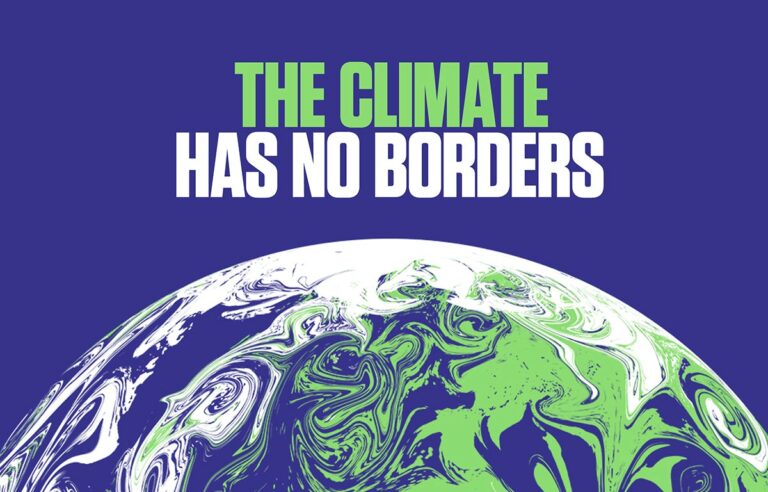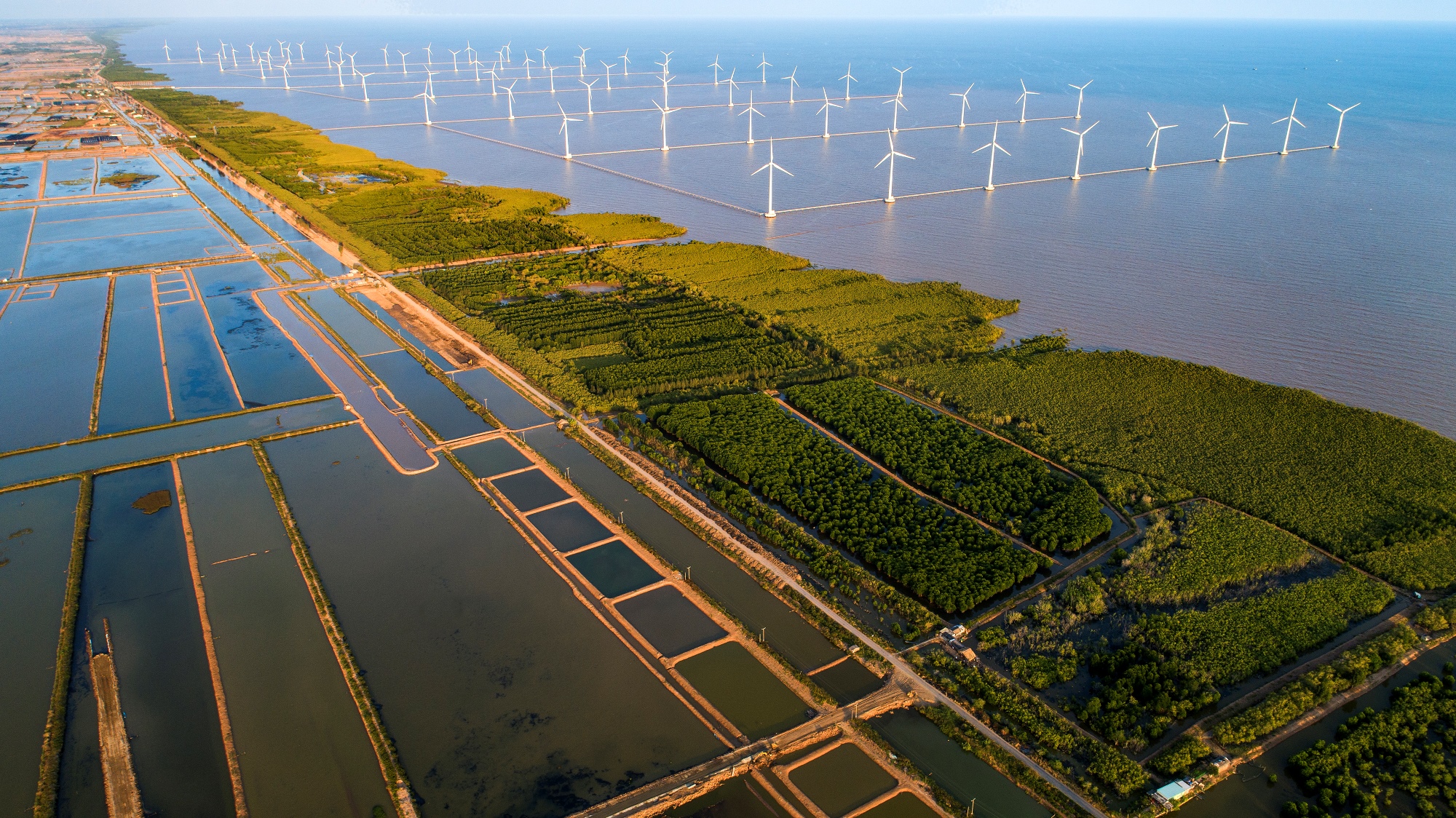Climate change adaptation: Viet Nam is making concrete actions to go green
VGP - As one of countries hit hardest by climate change, Viet Nam has not only scaled up commitments but also taken concrete actions to go green.
 |
From COP21 …
“Climate change represents the greatest global challenge of our time, and is shaping the future of mankind”. It is by these words that Viet Nam opened its statement at the high-level open debate of the UN Security Council on Climate Security on September 23rd in New York and highlighted its commitment to perform its duties in the fight against climate change.
On October 31st, Prime Minister Pham Minh Chinh leads the Vietnamese delegation to the 26th United Nations Climate Change Conference, also known as COP26, taking place in Glasgow, Scotland, the United Kingdom, under the co-presidency of the United Kingdom and Italy. The COP26 summit will bring parties together to accelerate action towards the goals of the Paris Agreement and the UN Framework Convention on Climate Change.
The Paris Agreement, adopted at the 21st session of the Conference of Parties to the United Nations Framework Convention on Climate Change (COP21), is considered a major milestone in the fight against climate change and is the first legally binding document for all Parties to address climate change. For the first time ever, countries agreed to work together to limit global warning to well below 2 degrees and aim for 1.5 degrees, to adapt to the impacts of a changing climate and to make money available to deliver on these aims.
The Vietnamese Government officially ratified the Paris Agreement on November 3rd 2016 in Ha Noi, after the signature of the Resolution No. 39/NQ-CP on October 31st 2016 by Prime Minister, ratifying the Paris Agreement on behalf of the Government of Viet Nam. A few days earlier, on October 28th 2016, the Action Plan to implement the Paris Agreement was issued by the Prime Minister.
Viet Nam is one of the countries most vulnerable to the impacts of natural disasters and climate change. Communities and individuals face a series of threats they need to adapt and react to. This is the reason why the country is deeply determined and strongly committed to take climate action, and develop a green, sustainable and low-carbon economy. As a member of the Paris Agreement, Viet Nam committed to bring forward a national plan setting out how much they would reduce their emissions, known as a Nationally Determined Contribution (NDC). At the COP21, Viet Nam pledged to reduce 8 per cent of its greenhouse gas pollution by 2030, and is aiming at 25 per cent reduction with adequate support from the international community. The country also pledged to contribute USD 1 million to the Green Climate Fund for the period 2016-2020.
… to a possible global leader in the transition to clean energy
In preparation for COP26, Viet Nam has been working closely with its international partners and the UK to strengthen collaboration on climate change. COP26 President-Designate MP Alok Kumar Sharma met with Viet Nam Prime Minister Pham Minh Chinh at the end of May 2021, to discuss Viet Nam’s upcoming climate action plans. During his visit, he also met with Government ministers, businesses and youth and civil society groups to welcome the progress the country has made on climate action so far, and discuss what support is needed to go further.
Sharma recognized Viet Nam’s contribution to the global fight against global warming and praised the country’s potential, saying that “Viet Nam is one of the world’s most vulnerable countries to climate change but it can also be a global leader in the transition to clean energy, by phasing out coal and ramping up renewables, particularly wind and solar power.”
In response to climate change, Viet Nam has spent billions of USD on natural disaster prevention and recovery. Regarding greenhouse gas emission reduction, the country issued a wide range of policies and regulations like Decree No.24-NQ/TW, the Politburo’s Conclusion No.56-KL/TW, and the Politburo’s Decision No.55-NQ/TW on orientation of national energy development strategy by 2030 with vision until 2045.
Deputy Prime Minister Le Van Thanh recently signed Decision No. 1658/QD-TTg approving the National Green Growth Strategy for 2021-2030 period, vision to 2050. The overall goal of the strategy is to accomplish green growth, thereby contributing to accelerating the process of restructuring the economy in association with growth model transformation in order to achieve economic prosperity, environmentally sustainability, and social equality. It also aims to facilitate transition to a green and carbon neutral economy and contribute to reducing global warming.
The Government will strive to reduce greenhouse gas emissions per GDP by at least 15 percent by 2030 and at least 30 percent by 2050 compared to 2014. The Government expects to raise the rate of renewable energy in total primary energy supply is expected to 15-20 percent and the forest coverage rate to 42 percent over the next decade. By 2030, at least 95 percent of urban solid waste will be collected and treated in accordance with regulations.
While hydropower and coal-fired power lead among power generation sources, Viet Nam is investing in developing its renewable energy sector, making it one of the most vibrant and quickly growing in Southeast Asia, presenting significant opportunities for investors. The Government is moving forward to develop renewable energy sources to ensure energy security and addressing the growing power demand. At present, hydropower holds the largest share amongst all renewable energy sources, followed by wind and biomass. Solar energy, biogas, and waste-to-energy technologies are picking up slowly while geothermal energy and tidal energy are at an early stage.
Viet Nam's upcoming power development plan is set to scale up its trajectory towards clean energy. Beyond abandoning new coal plans, Viet Nam will be switching from existing coal power generation to natural gas where possible. For remaining coal power plants, efficiency will be a focus. Going forward they will create better investment conditions for wind and solar power. The Government has been creating favorable conditions to facilitate the transition towards green energy by facilitating the participation of the private sector in the nation’s electrical grid expansion. In the Resolution 55, the Government recommends amendments to the Electricity Law to allow for private sector investment in power infrastructure. Attractive tariffs and tax incentives, have also attracted developers and lenders into the country, resulting in market growth previously unthinkable in the region.
 |
Updated NDC
As part of the Paris Agreement, all countries agreed that every five years they would come back with an updated plan that would reflect their highest possible ambition at that time. After five years of efforts to carry out the international commitment on climate change and reduction of greenhouse gas emission, Viet Nam is the ninth country to submit its updated NDC to the United Nations Framework Convention on Climate Change (UNFCCC) in 2020 amidst the complicated development of the COVID-19 pandemic.
Parties to the 2015 Paris Agreement on climate change decided that they would, by 2020, communicate to the UNFCCC their NDCs to explain the status of their individual contributions to the collective goal of limiting global warming to 1.5°C to 2°C above pre-industrial levels. Specifically, Parties with an NDC time frame up to 2025 were requested to communicate new, or second NDCs, and Parties with a time frame up to 2030 – to communicate or update their NDCs by 2020.
The Vietnamese Ministry of Natural Resources and Environment (MoNRE) joined hands with competent ministries and sectors to update the NDC based on the nation’s current situation and socio-economic development forecasts up to 2030. They also ensured that NDC implementation objectives is feasible and in line with the objectives of the country’s Socio-Economic Development Strategy, National Climate Change Strategy, Viet Nam Green Growth Strategy, and Strategy for Natural Disaster Prevention, Response and Mitigation.
In the updated NDC, Viet Nam indicated its decision to decrease greenhouse gas emissions by 9 percent by 2030, 1 percentage point higher than the target set in 2015. This could be further brought to 27 percent with international support through bilateral and multilateral cooperation and mechanisms under the Paris Agreement. Viet Nam rolled out measures to cut greenhouse gas emissions, and harmonise benefits between the climate actions and sustainable development. To date, Viet Nam is one of the few countries in the world increasing contributions to greenhouse gas emission reduction in the updated NDC.
“Responding to climate change requires the efforts of all ministries, sectors, local agencies, businesses, individuals, and communities, among which the youth plays an essential role. Every action, even the smallest, has an immense impact, contributing to changing awareness and creating motivation for the participation of the whole society,” said Pham Van Tan, deputy director general of the Department of Climate Change of MONRE) ./.
By Nguyen Minh

